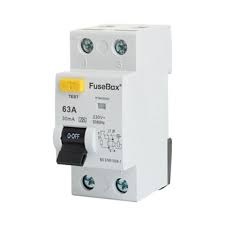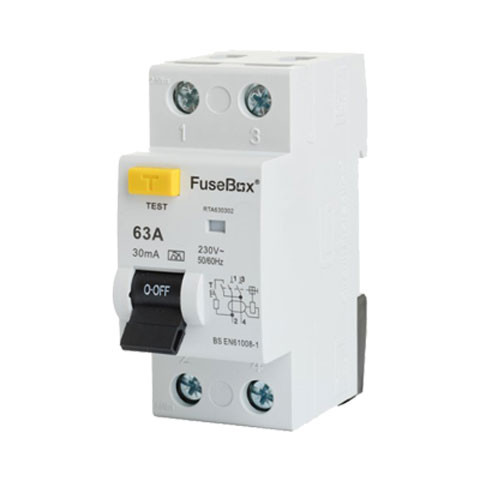Fault finding with an RCD trip can seem like a daunting task, but it’s important to approach it in a systematic and safe manner. Here’s a step-by-step guide to help you get started:
1. Understand RCDs: RCD stands for Residual Current Device. It’s a safety device that quickly cuts off the power when it detects an imbalance in the electrical circuit, such as when someone receives an electric shock or there’s a fault. RCDs are designed to prevent electrical fires and protect people from serious injuries or fatalities.
2. Identify the Tripped RCD: Locate your electrical panel or distribution board. Look for a RCD that has tripped; usually, a RCD that has tripped will have a button that has popped out or a switch that has flipped to the “off” position.
See below image of a RCD

3. Isolate the Circuit: Once you’ve identified the tripped RCD, you need to isolate the affected circuit. Turn off all the individual circuit breakers one by one while observing the RCD. When you turn off the correct circuit breaker, the RCD should reset and stay on. If the RCD trips again when you turn on a particular circuit breaker, you’ve identified the affected circuit.DO NOT REMOVE THE DISTRIBUTION BOARD COVER
4. Unplug Electrical Devices: Go to the area served by the affected circuit and unplug all electrical devices and appliances one by one. This includes items like toasters, kettles, computers, and lamps. Plug each item back in one at a time, testing the RCD after each item is plugged in. If the RCD trips when a particular item is plugged in, that device is likely faulty and needs further inspection or repair.
5. Check Fixed Appliances: If unplugging devices doesn’t identify the issue, check for fixed appliances on the circuit, such as hardwired smoke detectors, security systems, or HVAC units. These may have dedicated circuit breakers. Turn off these breakers one by one and see if the RCD resets. If turning off a specific breaker prevents the RCD from tripping, the issue may be related to that fixed appliance.
6. Call for Professional Help: If you’re unable to identify the cause of the RCD trip or if you notice any signs of damage or unsafe conditions, it’s important to contact a qualified electrician. They have the training and experience to safely diagnose and resolve more complex electrical issues, ensuring that your home’s electrical system is safe and compliant with local regulations.
Remember, electricity can be dangerous, so always prioritise safety. If you’re unsure or uncomfortable at any point during the fault-finding process, don’t hesitate to seek professional assistance.

